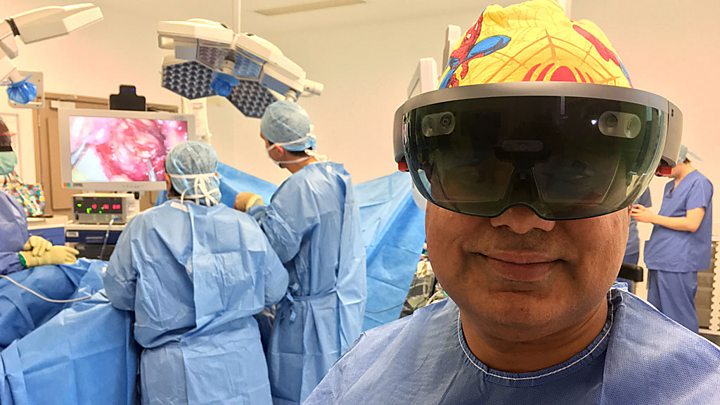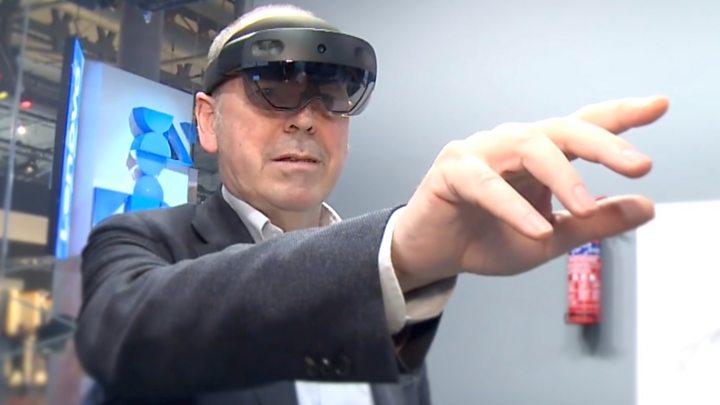 Image copyright
Image copyright
Getty Images
HoloLens allows the user to see digital images over real-world backgrounds
People who use augmented reality headsets to complete complex tasks fare worse than those with no high-tech help, a small study suggests.
In addition, those fitted with headsets over-estimate how well they perform.
The discovery might limit the usefulness of augmented reality, which has been finding a role in medical and engineering jobs.
The problem arose because of the way that human eyes focused, researchers said.
Seeing double
Augmented reality (AR) headsets, such as Microsoft’s HoloLens, overlay a computer-generated image on the real world.

The headsets resemble bulky spectacles, with images projected on to a lens.
The technology could help guide skilled staff who maintain complicated machines, such as jet engines, by giving visual cues while they work.
The headsets have also been trialled in hospitals to help guide surgeons completing tricky, time-critical procedures.
- Conjuring designs from thin air in a virtual world
- Microsoft staff: Do not use HoloLens for war
- Harry Potter Wizards Unite game released in Australia
But a research team at the University of Pisa found that people using headsets were less accurate than those who used the naked eye.
In the experiment, subjects were asked to complete a “connect-the-dots” test.
Participants completed the task twice – once with the headset and once without.
When the correct sequence of dots was projected on to the headset’s screen, they, on average, drew lines 2.3mm too long or short.
By contrast, the drawn lines from tests with no high-tech help were, on average, 0.9mm too short or long.
“Unfortunately, the users were not aware of [their] bad precision performances in AR-guided tasks,” study co-ordinator Dr Marina Carbone told IEEE Spectrum.

In follow-up interviews, they had felt they had performed just as well with the headset as without, she said.
They had also said using the headset had made them more tired, Dr Carbone said.
Human eyes sometimes struggled to focus on two separate images close to each other, she said.
The results suggest “that HoloLens should not be used for high-precision manual tasks” the study concluded.
“Although there is increasing interest in using commercial optical see-through head-mounted displays [for] manual tasks that require accurate alignment of VR data to the actual target – such as surgical tasks – attention must be paid to the current limitations of available technology,” it added.
The Pisa team is planning more research to deepen their understanding of when and how AR might be useful.
The study used Microsoft’s HoloLens headset but the researchers said the results would apply to all AR headsets that worked in similar ways.
Warning over using augmented reality in precision tasks

